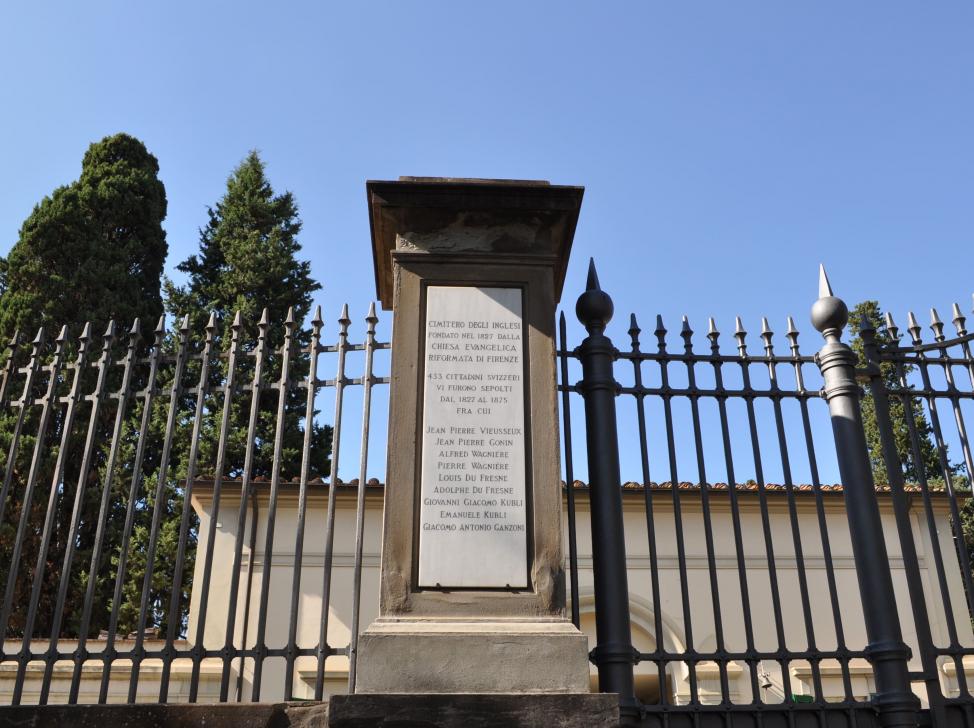RECORD
The Evangelical Cemetery in Porta a Pinti
Over the centuries the British have loved Florence more than elsewhere and some settled there, so much that many English became a synonym for foreigners of any nationality. Hence the Evangelical Cemetery of Porta a Pinti was traditionally called the ‘English cemetery’ although it was established by the Swiss Evangelical Reformed Church in 1827 and 1828, and later became an interdenominational and ecumenical evangelical cemetery. Prior to its establishment non Catholics had to be buried in Leghorn or in Trespiano, but the cemetery was considered too far away and stark, suitable for the poor and destitute.
The Grand-Duke granted the land, a small hill outside the city walls close to where the Pinti Gate (Porta a Pinti) once stood. It was outside the walls as the law of the time on health and burials stated. Carlo Reishammer, who was then but a young student of architecture, planned the shape of the cemetery, a polygon-shaped enclosure, that has since changed. In 1858 Fredrick William IV of Prussia gave a column that was placed on the top of the hill. In 1860, a second parcel of land was ceded to extend the area of the cemetery and build the caretakers’ cottage.
Major figures of European history and culture are buried there: for instance, the poet Elizabeth Barrett Browning, the intellectual Giovan Pietro Vieusseux, the poet Walter Savage Landor. There are also the graves of members of Italian evangelism such as Salvatore Ferretti and Paolo Geymonat. Artists such as Lorenzo Bartolini, Giuseppe Lazzerini, and Hiram Powers contributed to the tombstones, in neoclassical and romantic style. Following the unification of Italy Florence was briefly the capital of Italy. The city underwent change and the area was renovated: the walls were pulled down and the large avenues (viali) were built. Architect Carlo Poggi re-planned the area, the cemetery was closed as it had become part of the development of the Maglio District Maglio. At that point the Swiss congregation joined the other evangelicals in Florence, looking for a new plot of land. Bureaucracy took its toll but in 1869 the Comitato Evangelico Italiano (Italian Evangelical Committee) founded by Francesco Madiai purchased a new plot in the Galluzzo District. In 1877 the Porta a Pinti was closed and became a monumental cemetery.
Lastly, on February the 28th, 1878, the new Cimitero evangelico degli Allori (Evangelical Cemetery of Laurels), designed by architect Giuseppe Boccini. The cemetery is still a point of reference for evangelical burials and for celebrities such as the collectors Stibbert and Horne, writers such as Anna Banti, Oriana Fallaci, and the art critic Roberto Longhi.
FURTHER INFORMATION
Included in: 14/03/2019Last edited in: 04/08/2019
PLACES OF INTEREST
The Evangelical Cemetery in Porta a Pinti
